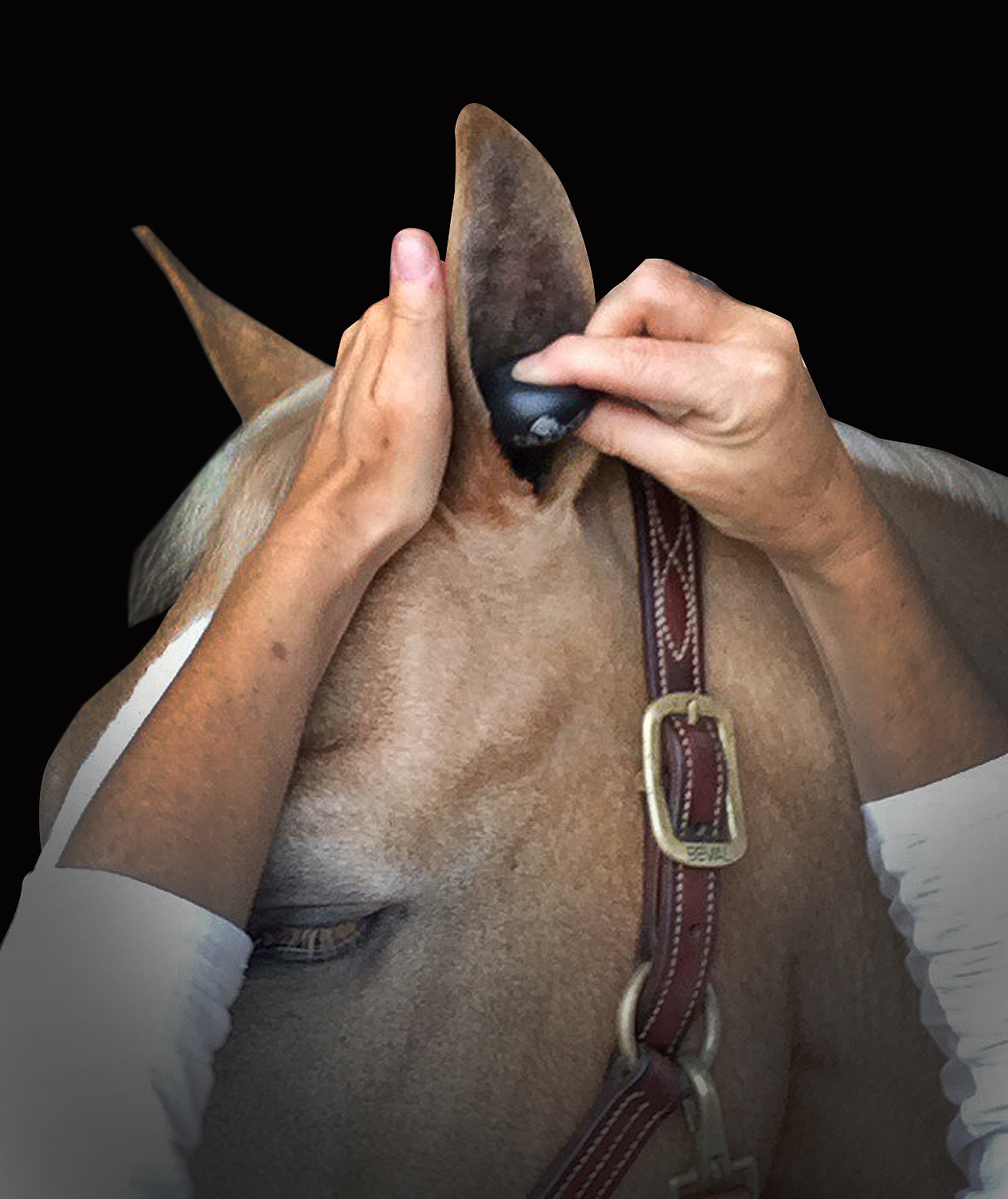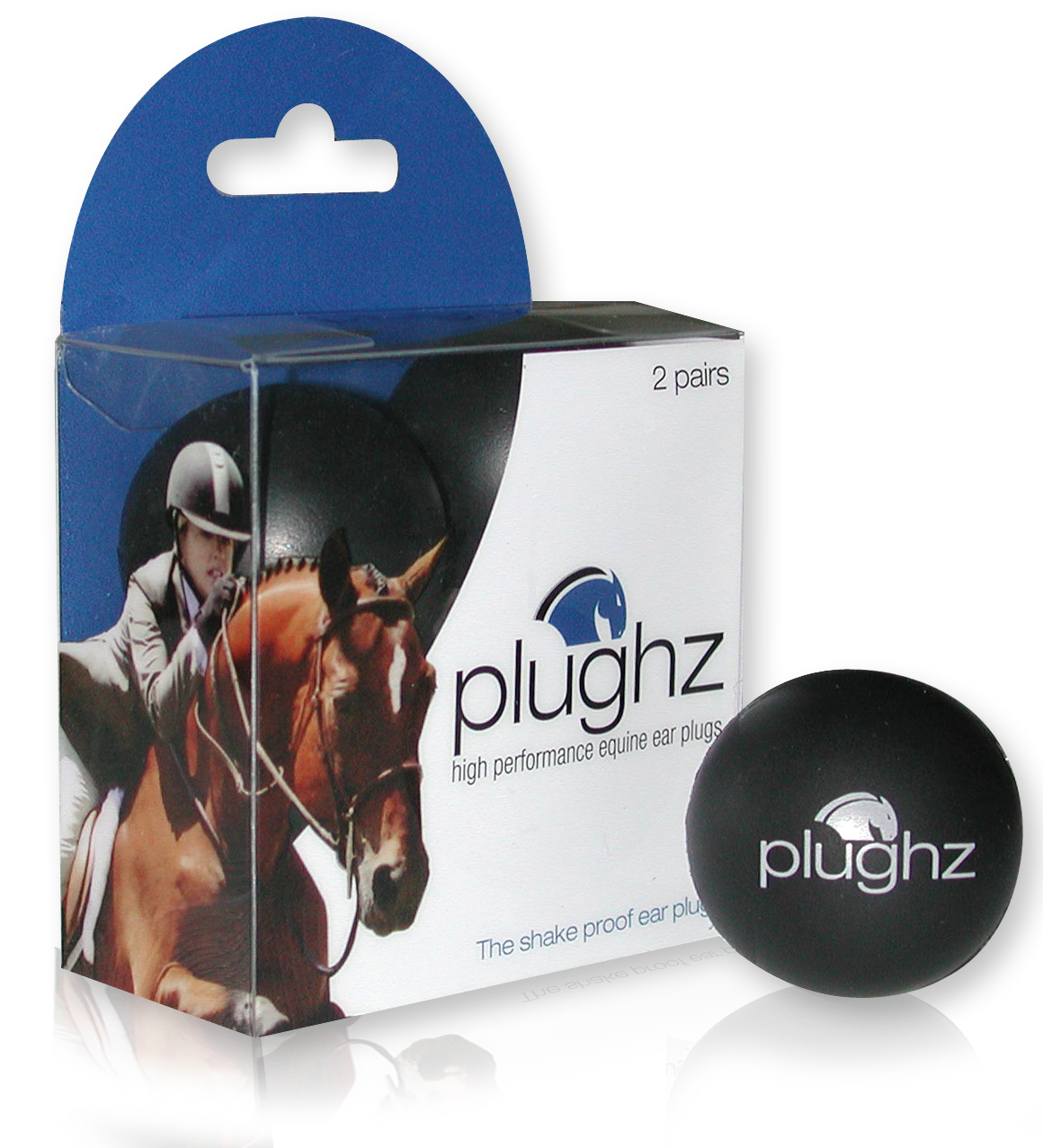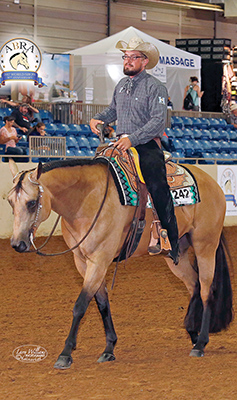 Applause is praise for a job well done. Society has taught us to recognize achievement by rhythmically slapping our hands together so it’s only natural for spectators to clap, even hoot ‘n’ holler for an exhibitor who has placed well in a class. But for horses, who are prey animals that are put on alert by loud noises, this form of compliment can be unsettling or alarming.
Applause is praise for a job well done. Society has taught us to recognize achievement by rhythmically slapping our hands together so it’s only natural for spectators to clap, even hoot ‘n’ holler for an exhibitor who has placed well in a class. But for horses, who are prey animals that are put on alert by loud noises, this form of compliment can be unsettling or alarming.
Albany, Georgia trainers Jonathan and Joanna Himes of JH Performance Horses, recall a client horse in training that was incredibly nervous when the clapping started during a line-up.
“The horse would grab its tail and run sideways,” Joanna said. “His response got bad enough at one show in particular that at the end of the class, the rider dismounted.”
AQHA amateur exhibitor Lauren Eichstadt Forsythe, of Woodland, California, has had patterns foiled by clapping. At the All-American Quarter Horse Congress Showmanship is often run in the Celeste Building with two exhibitors competing at the same time at different ends of the arena.
“When the other pattern was finished everyone started clapping. My horse leaped into the air during a turn,” she said. “I haven’t seen any reactions that are dangerous unless the exhibitor is a small child or inexperienced, but I’ve seen plenty of patterns ruined by clapping.”
Adam D’Agostino operates Empire Performance Horses, an APHA and AQHA training business in New York, and has been in a line-up with other trainers and witnessed the bucking, rearing and spooking that can occur when a horse is frightened by clapping.
 “Both horses I saw were shown successfully, by talented trainers and at quite a high level in AQHA, but would occasionally have melt downs in the line-up if the crowd was clapping too loudly,” he said.
“Both horses I saw were shown successfully, by talented trainers and at quite a high level in AQHA, but would occasionally have melt downs in the line-up if the crowd was clapping too loudly,” he said.
Fortunately, for show horses sensitive to clapping, there are several solutions to make the experience less frightening.
Hold the applause
So why does clapping bother horses? Anatomy and instinct.
The natural design of a horse’s ears protect this “flight” animal. Ashely Griffen, MS at the University of Kentucky wrote,
“Horses’ ears can move 180 degrees using 10 different muscles compared to three muscles for the human ear and are able to single out a specific area to listen to. This allows the horse to orient itself toward the sounds to be able to determine what is making the noise,”
In addition to having ears and muscles naturally designed to collect the slightest noises, a horse’s hearing is tuned into a much wider range of high-frequency than humans. For example, a horse can hear the ultrasonic squeak of a bat. According to Griffen, horses can hear a range of 14 Hz to 25 kHz whereas the human hearing range is 20 Hz to 20 kHz.
A horse’s ears are like a satellite dish perfectly shaped and in tune with the smallest frequency so that should danger be lurking they can spook, spin and bolt in the opposite direction putting lifesaving distance between itself and a predator.
The safest bet is to always be on your guard and be proactive with a horse that is sensitive to noises like clapping and to make sure that you also keep yourself safe. That combined with management strategies can help a horse deal with clapping and continue to have a successful career.
 Does venue matter?
Does venue matter?
Each horse is an individual. Horses, like people, have certain triggers for their fears. There may also be compounding issues besides that of the clapping at each venue that elicit fear in a horse. The lighting and the visibility of activity going on outside the arena may influence a horse’s reaction to applause.
“I find that some horses with a clapping fear do better in indoors and some do better in outdoors. It’s hard to truly say what is better because each horse is different in their fear response,” D’Agostino said.
In Eichstadt Forsythe’s experience, her horses have reacted more to clapping inside and she thinks it’s related to the echoing effect.
“I notice it more when the arena is already loud, such as the Celeste Arena, which has the metal bleachers versus other indoor venues that have concrete bleachers,” she said. “This is probably because clapping is usually accompanied by people getting up to leave and walking on metal makes it louder.”
Himes echoed Eichstadt Forsythe’s experiences noting that the client horses that have been sensitive to clapping have been more reactive inside than out.
Depending on the horse, planning a show schedule based on the venue and an indoor vs an outdoor arena may be one solution.
“Venue choice can help a horse with a strong fear of clapping and noise,” D’Agostino said. “I have a mare that must be ear-plugged in an indoor arena, but can show fairly successfully outdoors without the ear plugs.”
Restricting a horse’s showing to one arena type versus another may not help clients achieve his/her goals and limit the horse’s potential. Fortunately, ear plugs, desensitizing and show legal calming medications can help horses cope with clapping.
Ear plugs
Like the foam earplugs people can wear to dampen the noise of machinery, gun fire or even snoring, earplugs can reduce the sound of clapping and ambient noise for sensitive horses. Equine ear plugs are available in pony and horse sizes. The horse size works well for most but not all. The exceptions are horses with tiny ears or babies in which case the pony size can be used. The other exception is larger hunter horses that naturally have bigger ears.
“Typical horse sized ear plugs don’t block the noise sufficiently for hunter horses with large ears,” Eichstadt Forsythe said. “In this case, a pony size can be put in with a regular one on top. It provides the same level of effect you would get using just the horse size in a horse with smaller ears.”
Believe it or not, they are available in hot pink, neon green, yellow and a variety of other colors, though black and brown are most appropriate for the show ring.
“Typically, the ear plugs sit far enough down in the ear that they aren’t noticeable,” Eichstadt Forsythe said.
POMMS ear plugs are popular in the show pen.
“I have used other brands in the past, but have had the most success with that brand,” D’Agostino said. “A cheap alternative are the foam soccer ball cat toys you can purchase at a pet store, but you will have to paint them.”
Eichstadt Forsythe also prefers the POMMS brand, specifically the ones that look like squishy golf balls.
“The ones I like are the smooth and round,” she said. “There are also ones that are fuzzy and memory foam ones, but those don’t seem to stay in as well in my experience.”
The Himes prefer the Plughz brand.
“They tend to be a little smaller than the POMMS brand and they don’t swell as badly with contact with oils (like fly spray),” she said. “They are mostly one size fits all – though I think there are pony options.”
Introducing a horse to earplugs can be tricky, especially if you have a horse that does not like its ears touched and it may be more difficult to get the plugs in and out of the ears.
Before D’Agostino attempts to plug a horse’s ears, he makes sure the horse is comfortable having their ears handled and that he can put his fingers inside the upper part of the ear.
“I never just shove an ear plug in,” he said.
Sometimes even the most well behaved horses do not respond well to plugs, so make sure that you test drive them on the ground first. Himes puts the ear plugs in the horse’s ears well before it’s time to be ridden.
“We give them a chance to be loose and shake their head a little bit,” Joanna said. “We always try to put them in with time to ride around a bit before we go show.”
Eichstadt Forsythe puts the ear plugs in at home and leaves them in for a few days leading up to the show.
“We leave the ear plugs in for the duration of the show and judging by the shocked reaction when we remove them at the end, my horses seem to like the peace they get with them in,” she said.
She believes her horses appreciate the muffled background noise. “After a week of having earplugs in at Oklahoma City we took them out and as soon as the first one came out my horse went crazy for a minute until he got used to the noise again,” she said.
For many horses wearing ear plugs can make clapping tolerable and enable them to show successfully. But D’Agostino cautions, “horses are flight animals and you can never truly override that response,” he added.
Desensitizing
For horses that simply don’t like or aren’t soothed by ear plugs, desensitizing may be more helpful. Early in D’Agostino’s career he worked for a four-in-hand driving trainer. The farm owned a horse that was quite put-off by the hunting horn sound, an integral part of the competitive class.
“The horse would start bouncing in the harness,” he said.
The solution: they found recorded horn music and played it in the barn to get the horse used to it. After listening to and working with the music in the background, the horse began to settle in. Years later, when D’Agostino had a mare in for training that was bothered by clapping, he remembered the training tool.
“She was a seasoned show horse and reacted badly to the ear plugs. I put them in and longed her. She pinned her ears and flailed her head around to try to dislodge them,” he said. “So, instead we use recorded applause in the barn for a few weeks to help with this issue and it worked.”
Conclusion
Even with the help of ear plugs, desensitizing exercises and even show legal calming medications aren’t enough for all horses. Some will always be a little on edge because horses are prey animals.
“In my experience, horses that are afraid of clapping can improve their fear, but it’s hard to completely erase that strong of a fear in a flight animal,” D’Agostino said.
The client horse Himes spoke of earlier never really became comfortable with clapping, but the horse did have a successful career.
“We just learned better management and through a combination of things got the horse to react less in the lineup,” she said.
Eichstadt Forsythe agreed that with one horse, in particular, the fear of clapping never totally dissolved.
“There were things I could do, such as keeping myself relaxed instead of tensing, but it never completely went away,” she said. “Earplugs have always been sufficient to muffle it enough that they aren’t bothered.”



You must be logged in to post a comment Login